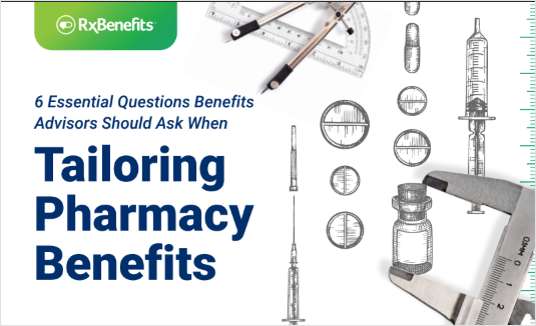No one understands having do to more with less better than cash-strapped school districts. With hundreds of staff and teachers to retain, how does a school district function when faced with mounting budget pressures, including escalating insurance premiums of 10 percent to 20 percent a year and a 0 percent state budget increase allocation? Despite these pressures, one school district in Wisconsin — and its broker — didn’t give up.
When an out-of-the box telehealth plan was presented to Daren Sievers, Superintendent Administrator for Slinger School District in Wisconsin, he and his team were hopeful. Their insurance broker, Stephanie Riesch-Knapp of R&R Insurance Group decided to focus on a solution that aimed to reduce claims. She knew that getting creative with plan design would help the district, but no one could have imagined to what extent. By engaging employees and promoting utilization of the benefit, Slinger School District ultimately was able to reverse everyone’s expectation that raises would be non-existent for the year without the necessary state funding.
“The Slinger School District wanted innovative ways to enhance benefits and help their employees,” says Riesch-Knapp . “When they came to me, they were looking to try to engage their employees in a program that would enhance their lives and reduce absenteeism.”
Two years ago, when the district was facing a steep increase in health insurance costs, the issue of how to afford benefits for employees was a very real challenge. The only choice was for the district to switch to a high-deductible (HD) insurance plan so premiums wouldn’t increase. Had they stayed on their current non-deductible plan, the district would have faced a 14 percent increase in health insurance costs, and with no increase in state budget, there was simply no money to fund it. With a new deductible of $2,500, the district’s health savings account (HSA) plan became even more important to ease some of the out-of-pocket bite.
And to further diminish the impact of the high deductible plan, Riesch-Knapp suggested they add a robust telehealth platform — one that included unlimited 24/7 virtual doctor at no copay per consultation, medication and procedure pricing, and health plan deductible tracking — to the plan design in order to redirect the most common, acute illnesses to telehealth physicians. One important factor they looked for was a service that offered a fixed cost to the district and could be offered at no cost to the employees. Sievers liked the combination because he knew this would not only save employees money, but would also help preserve their HSA funds for other needs that might come up. A wellness program was also added to provide employees with financial incentives to set and meet specific health goals.
District Payroll & Benefits Administrator Sue Stoffel has logged 20 years with the district. For years, teachers and staff hadn’t had to worry about a deductible, so she knew switching to the high deductible insurance plan was a tough pill to swallow. “I really give kudos to Stephanie for proposing this option. It is a great benefit solution that we knew would not only be relatively inexpensive for the district, but also a great supplement to our new HD plan.” She admits that although people don’t often get excited talking about insurance benefits, launching this benefit was different.
“The telehealth provider made it easy for us to roll out to employees with materials, including a list of the top nine reasons why people go to the doctor or ER for non-emergency conditions that the service can handle — things like bronchitis, pink eye, and ear infection. Listing those conditions is a good reminder for people and gets them to think specifically about how to use it.”
“We felt it would fill a gap that the district had. They have a demographic of young, educated individuals with families so the need for telehealth was an opportunity to capture some savings,” Riesch-Knapp says.
The district was looking for a plan designed to be used before employees’ primary care doctor or the emergency room. Research shows that easier and faster care options can help alleviate the issue of employees putting off care and creating scenarios where small things become more serious and more expensive sicknesses. Such options consequently minimizes, and in some cases eliminate, sick days altogether.
“Ironically, the first day I went around to tell everyone about the new plan, I could feel myself getting a sinus infection,” Sievers explained. “So I made a call to the telehealth provider at 10:30 am. The doctor called me back immediately. I was diagnosed and had a prescription by 11:15 a.m. By 2 p.m. I was getting my voice back and getting on with my day.”
“I also explained that whatever we saved in our renewal would come back to them in the form of raises. Everyone wins. And, that’s what we did — we created a 2.3 percent teacher raise pool increase and a 3.1 percent support staff raise pool increase this year. Because the employees embraced the change, we saved $310,000 on health insurance premiums and now that money is being funneled right back to them. Thanks to this service and the wellness incentive program, our renewal cost went down 2 percent instead of incurring the average 8 percent increase expected.”
That news is music to ears. “I would highly recommend that employers take a look at these types of technology-based options to provide both convenience and cost savings for their employees. I would say if an organization wants cost savings and is open to being innovative, it’s a way to improve employee consumerism.”
Last year, the district saw a whopping 86.6 percent overall utilization of the telehealth benefit. And this year may see even higher numbers.
“We really like that it saves a visit to the doctor’s office and it boosts our insurance program. It’s easy to see how employees could feel like they lost something when they went from a low-deductible plan to a high one, so supplementing with a benefit that helps them to think ‘my employer is looking out for my well-being’ was important. Our ultimate product is education, and keeping teachers in the classrooms is better for our students,” says Stoffel.
Sievers agrees that the effort is about more than saving money; It’s about improving morale and showing employees that the district has their quality of life and their best interest in mind. “Caring for people and helping them is what it is all about, and that’s why we do it.”
THE SLINGER SCHOOL DISTRICT FACTS:
Plan Utilization rate: 86.6%
Number of employees enrolled: 225
Number of doctor consultations and resulting prescriptions: 177 & 150
Cost: 100% covered by Slinger School District with no cost to the employee
Out-of-pocket: $0 out-of-pocket consultation fee for employees
Number of teachers: 195
Number of administrators/support staff: 65
Percentage of insurance renewal increase/decrease for 2015-2016 academic year: -2%
Typical percentage of increase Slinger was experiencing: 10-20%
Raise Pool: $310,000
Savings from wellness and avoiding traditional care (primary care doctors, ER, Urgent Care, etc.): $310,000
Broker/Plan Designer: Stephanie Riesch-Knapp at R&R Insurance Group
Complete your profile to continue reading and get FREE access to BenefitsPRO, part of your ALM digital membership.
Your access to unlimited BenefitsPRO content isn’t changing.
Once you are an ALM digital member, you’ll receive:
- Breaking benefits news and analysis, on-site and via our newsletters and custom alerts
- Educational webcasts, white papers, and ebooks from industry thought leaders
- Critical converage of the property casualty insurance and financial advisory markets on our other ALM sites, PropertyCasualty360 and ThinkAdvisor
Already have an account? Sign In Now
© 2025 ALM Global, LLC, All Rights Reserved. Request academic re-use from www.copyright.com. All other uses, submit a request to [email protected]. For more information visit Asset & Logo Licensing.








